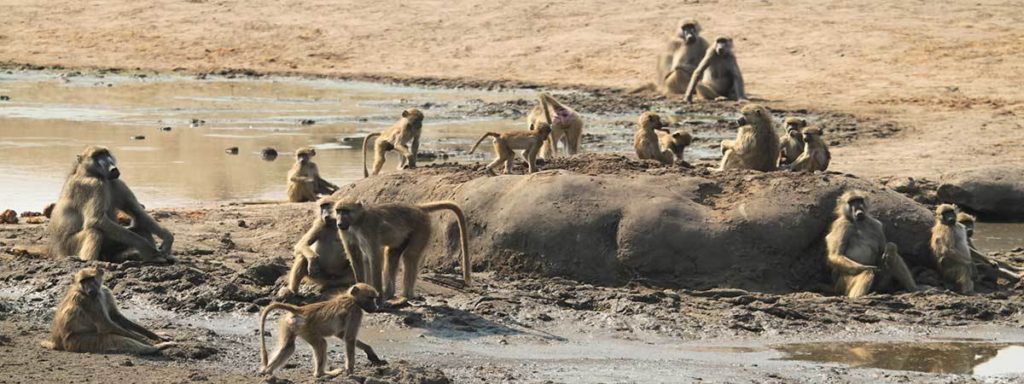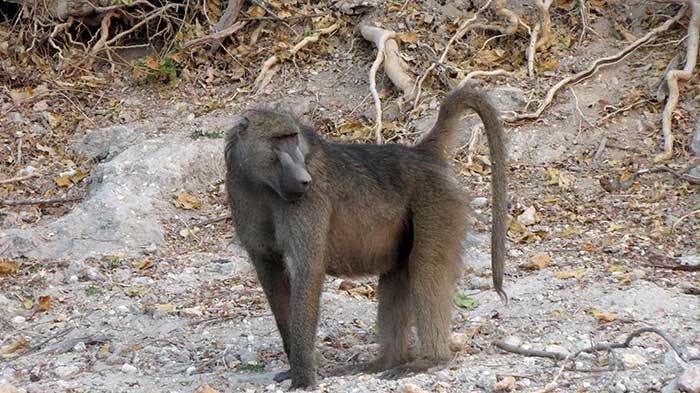African Primates- Baboons, Gorilla, Monkey

Africa hosts 51 primate species in habitats varying from forests to savannah woodlands. Out on safari the most common primates you will see are baboons and monkeys.

In apes, the dexterity of the hands is very close to that of humans –and chimps are a good example.
Grooming is useful for social bonding and is effected by use of the mouth and hands.
The apes are a category of primates represented in Africa by gorilla, chimpanzees and bonobo. Genetically, they are the closest primates to man
Primates of Africa
With the exception of humans, who inhabit every continent, most primates live in tropical or subtropical regions of the Americas, Africa and Asia
Baboons, vervet monkeys and chimpanzees are not dependent on trees and can survive in savannah and sub desert areas.
Primates have complex social organizations and the majority live in female-bonded groups.
A common feature among primates is evolution of the “primate hand.” This is a opposable thumb that is used for climbing and eating, and tool making in the case of
apes.
Baboons and apes have well-developed dexterity of the hand with the tips of the thumb and fore finger meeting at right angles.

Troop Size
Moving in troops of about 20, they feed on young shoots, seeds and fruit but occasionally will eat insects and birds eggs.
Monkeys
are renowned as being excellent climbers and characterized by a complex brain, as well as good vision.
Found throughout southern Africa, their typical habitat is riverine vegetation and acacia trees. Also found in our garden and house where their diet tends towards bread and fruit from the kitchen. What a way to earn a crumb?
Description
Vervet monkeys are long-legged, long-tailed, and omnivorous monkeys.
The vervet monkey is light coloured with a black face with males having a pale blue scrotum. This monkey weighs between 5 and 9kg
Behaviour
Dominant males will exaggerate their status by walking with a swagger and squatting with obvious ostentation. Monkeys are generally social, though they exhibit occasional rivalry.
When attempting to intimidate a rival, a monkey stands at its tallest, with the effect that it looks bigger than it really is. They move about in trees by running along the branches on all fours
Bush Baby
Description
one of their characteristics is a loud shrill cry similar to that of a human baby. Bush babies have large, round eyes for good night vision and bat like ears that enable them to track prey in the dark.
A powerful leaper, the bush baby pushes off with its powerful hind legs and holds its arms up, leaping more than 6 meters.
Life Expectancy – 14 years in captivity
Behaviour – They are active only after sundown. Look for these elusive tree creatures high up in trees.
Their days are spent in hollow trees before foraging among the treetops at night for insects and fruit. Very agile in trees but awkward on the ground, hopping in a frog like fashion. Although they are usually solitary, they may group together to form small and temporary communities. During the day, they hide to avoid harm from eagles and large snakes
General
Bush babies consist of about 18 species found in Africa – of which there are 2 types : the lesser bush baby and the greater bush baby
